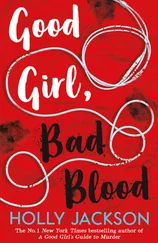Holmes Patricia - Girlology - A Girl's Guide to Stuff that Matters
Здесь есть возможность читать онлайн «Holmes Patricia - Girlology - A Girl's Guide to Stuff that Matters» весь текст электронной книги совершенно бесплатно (целиком полную версию без сокращений). В некоторых случаях можно слушать аудио, скачать через торрент в формате fb2 и присутствует краткое содержание. Жанр: Старинная литература, на английском языке. Описание произведения, (предисловие) а так же отзывы посетителей доступны на портале библиотеки ЛибКат.
- Название:Girlology: A Girl's Guide to Stuff that Matters
- Автор:
- Жанр:
- Год:неизвестен
- ISBN:нет данных
- Рейтинг книги:3 / 5. Голосов: 1
-
Избранное:Добавить в избранное
- Отзывы:
-
Ваша оценка:
- 60
- 1
- 2
- 3
- 4
- 5
Girlology: A Girl's Guide to Stuff that Matters: краткое содержание, описание и аннотация
Предлагаем к чтению аннотацию, описание, краткое содержание или предисловие (зависит от того, что написал сам автор книги «Girlology: A Girl's Guide to Stuff that Matters»). Если вы не нашли необходимую информацию о книге — напишите в комментариях, мы постараемся отыскать её.
Girlology: A Girl's Guide to Stuff that Matters — читать онлайн бесплатно полную книгу (весь текст) целиком
Ниже представлен текст книги, разбитый по страницам. Система сохранения места последней прочитанной страницы, позволяет с удобством читать онлайн бесплатно книгу «Girlology: A Girl's Guide to Stuff that Matters», без необходимости каждый раз заново искать на чём Вы остановились. Поставьте закладку, и сможете в любой момент перейти на страницу, на которой закончили чтение.
Интервал:
Закладка:
Like to Cycle?
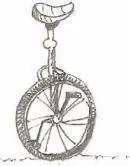
Your monthly cycle begins on the day you start your period. Hormones from the brain tell the ovary to start getting an egg ready. In the ovary, the egg grows in a little sac of fluid called a follicle. The follicle makes estrogen that causes the endometrium to grow a thick and lush lining. When the egg ovulates (which means it pops out of the ovary), the follicle then makes progesterone that prepares the endometrium for a pregnancy. If the egg is not fertilized by a sperm from a male, a pregnancy does not occur. With no pregnancy, the ovary stops making the progesterone, and that signals the endometrium to shed the lining (and that’s a period). As the period begins, the brain signals the ovary to start over with a new follicle and a new lining in the endometrium. This amazing cycle then starts all over again!
Want the short report?Egg matures > egg ovulates > egg travels down fallopian tube and into the uterus. No pregnancy? Then the uterus recognizes that and sheds the old lining, which starts a period. Now that’s an easier story to follow!
Another way to say it: It’s kind of like a bed is made in the uterus for a baby to grow in. If there’s no baby there, the uterus decides it’s time to change the “bed,” sort of like changing the sheets. How often do you change your sheets? In your uterus, it’s once a month!
And even if you don’t want it, here’s the long report.
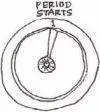 Cycle day 1. The first day you have menstrual bleeding is always considered day 1. It’s usually anywhere from 25 to 35 days after your last period. Everyone always seems to think that period cycles are always 28 days or one month . . . but everyone is a little different, and cycles can be longer or shorter (anywhere from 21 to 45 days) and still be normal.
Cycle day 1. The first day you have menstrual bleeding is always considered day 1. It’s usually anywhere from 25 to 35 days after your last period. Everyone always seems to think that period cycles are always 28 days or one month . . . but everyone is a little different, and cycles can be longer or shorter (anywhere from 21 to 45 days) and still be normal.
 Cycle days 1–7.Periods usually last anywhere from three to seven days, but you only lose about two tablespoons of actual blood in all that time. It seems like more doesn’t it? That’s because of the other fluids and tissue that are released (think of them as the pillow cases and bedspread that need to be cleaned, too). Your bleeding is happening because there is no pregnancy, and the uterus has decided to release the old lining and begin a new lining (change the sheets!).
Cycle days 1–7.Periods usually last anywhere from three to seven days, but you only lose about two tablespoons of actual blood in all that time. It seems like more doesn’t it? That’s because of the other fluids and tissue that are released (think of them as the pillow cases and bedspread that need to be cleaned, too). Your bleeding is happening because there is no pregnancy, and the uterus has decided to release the old lining and begin a new lining (change the sheets!).
Your uterus pushes out the period (old sheets) by contracting its muscular walls. Some girls will feel these contractions as cramps.
 Cycle days 7–12.At the same time that you are having your period, your brain and ovaries are already talking. Your brain is recruiting another egg for the next cycle, and your uterus is getting orders to prepare a fresh lining. Your hormones are helping with all this communication. The follicle (which holds the recruited egg) in your ovary is making that hormone called estrogen that helps thicken the lining of the uterus. So as soon as your bleeding is done, your uterus is already “fluffing up the sheets,” or getting a new lining ready for the next cycle in case an embryo is on the way. Now for this whole thing about babies. Your body needs a lot of practice with its cycles before it’s really ready for a baby. That’s why you start your periods way before you are ready to actually have sex and get pregnant.
Cycle days 7–12.At the same time that you are having your period, your brain and ovaries are already talking. Your brain is recruiting another egg for the next cycle, and your uterus is getting orders to prepare a fresh lining. Your hormones are helping with all this communication. The follicle (which holds the recruited egg) in your ovary is making that hormone called estrogen that helps thicken the lining of the uterus. So as soon as your bleeding is done, your uterus is already “fluffing up the sheets,” or getting a new lining ready for the next cycle in case an embryo is on the way. Now for this whole thing about babies. Your body needs a lot of practice with its cycles before it’s really ready for a baby. That’s why you start your periods way before you are ready to actually have sex and get pregnant.
 Cycle days 12–14.Ovulation time. Now that the next egg has been recruited, it is ready for take off. The follicle that it has been growing in will open up and let it go! This is called ovulation. Some girls actually feel a slight twinge or cramp when this happens. If there is discomfort, it’s called mittelschmerz (dare you to use that in your next English paper!!). That’s a German word that means “middle pain.” Most girls are clueless that such an amazing thing is happening in there.This is the time when you may also notice that your vaginal discharge seems a little more watery or slimey. This happens because your hormones tell your cervix to change the discharge to make it easier for sperm to pass through. The cervix says okay, and makes the discharge extra slippery. Pregnancy can happen during about eight days every cycle. The six or seven days before and two or three days after ovulation are the days that pregnancy is most likely to happen if you are having sex. Because ovulation is unpredictable and young girls’ cycles are not always the same every month, it is really hard to figure out exactly when pregnancy can or can’t happen.
Cycle days 12–14.Ovulation time. Now that the next egg has been recruited, it is ready for take off. The follicle that it has been growing in will open up and let it go! This is called ovulation. Some girls actually feel a slight twinge or cramp when this happens. If there is discomfort, it’s called mittelschmerz (dare you to use that in your next English paper!!). That’s a German word that means “middle pain.” Most girls are clueless that such an amazing thing is happening in there.This is the time when you may also notice that your vaginal discharge seems a little more watery or slimey. This happens because your hormones tell your cervix to change the discharge to make it easier for sperm to pass through. The cervix says okay, and makes the discharge extra slippery. Pregnancy can happen during about eight days every cycle. The six or seven days before and two or three days after ovulation are the days that pregnancy is most likely to happen if you are having sex. Because ovulation is unpredictable and young girls’ cycles are not always the same every month, it is really hard to figure out exactly when pregnancy can or can’t happen.
 Cycle days 15–18.Ovulation has usually happened by now, and the egg is still traveling down the tube. If it has already hooked up with a sperm, an embryo is forming (we’ll talk about that more in chapters 6 and 7). Most likely, it’s alone and enjoying the massage as it is swished down the fallopian tube into the uterus. Once the egg arrives in the uterus, it hangs out for a couple days before it’s time to go.
Cycle days 15–18.Ovulation has usually happened by now, and the egg is still traveling down the tube. If it has already hooked up with a sperm, an embryo is forming (we’ll talk about that more in chapters 6 and 7). Most likely, it’s alone and enjoying the massage as it is swished down the fallopian tube into the uterus. Once the egg arrives in the uterus, it hangs out for a couple days before it’s time to go.
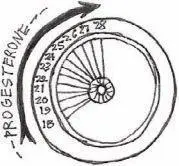 Cycle days 18–28or so. This is a time for rest in the endometrium. The follicle that had released the egg is now making a new hormone called progesterone. Progesterone will make the fluid in the cervix thicken and will get the lining in tip-top shape in case an embryo arrives. If there is no pregnancy in the uterus, the amount of progesterone falls and the endometrium can’t live without it, so it leaves the uterus as a period, which brings you back to day 1. As the progesterone levels are changing, some girls get moody or might feel more hungry than usual. Acne can worsen during this time. Some girls even feel a little puffy or bloated. That’s why you might hear girls complaining when they’re about to get their periods. All these symptoms are common and go away as soon as a period starts. Rarely, these symptoms are so bad that they affect your friendships and relationships at home. If that happens with you, please talk with your doctor because there are things that can help.
Cycle days 18–28or so. This is a time for rest in the endometrium. The follicle that had released the egg is now making a new hormone called progesterone. Progesterone will make the fluid in the cervix thicken and will get the lining in tip-top shape in case an embryo arrives. If there is no pregnancy in the uterus, the amount of progesterone falls and the endometrium can’t live without it, so it leaves the uterus as a period, which brings you back to day 1. As the progesterone levels are changing, some girls get moody or might feel more hungry than usual. Acne can worsen during this time. Some girls even feel a little puffy or bloated. That’s why you might hear girls complaining when they’re about to get their periods. All these symptoms are common and go away as soon as a period starts. Rarely, these symptoms are so bad that they affect your friendships and relationships at home. If that happens with you, please talk with your doctor because there are things that can help.
Whatif My Periods Are Not Regular?

Let’s back up a little. After your very first period (it’s called menarche, which sounds like anarchy and is pronounced MEN ar kee), you might have another period a month later, or it might not come again for several months.

After your first few periods, you should expect your periods to occur anywhere from 21 to 45 days apart. It might be 28 days one month, 40 days the next, 32 days the next. That’s all normal at first. A period doesn’t always come at the same exact time every month (remember months aren’t all the same length, either), but it should start to show a predictable pattern within a few years after you start.
Читать дальшеИнтервал:
Закладка:
Похожие книги на «Girlology: A Girl's Guide to Stuff that Matters»
Представляем Вашему вниманию похожие книги на «Girlology: A Girl's Guide to Stuff that Matters» списком для выбора. Мы отобрали схожую по названию и смыслу литературу в надежде предоставить читателям больше вариантов отыскать новые, интересные, ещё непрочитанные произведения.
Обсуждение, отзывы о книге «Girlology: A Girl's Guide to Stuff that Matters» и просто собственные мнения читателей. Оставьте ваши комментарии, напишите, что Вы думаете о произведении, его смысле или главных героях. Укажите что конкретно понравилось, а что нет, и почему Вы так считаете.

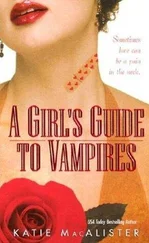
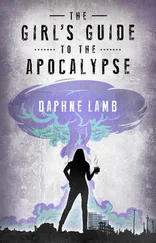
![Нил Уолш - Единственное, Что Имеет Значение [The Only Thing That Matters]](/books/393630/nil-uolsh-edinstvennoe-chto-imeet-znachenie-the-onl-thumb.webp)

